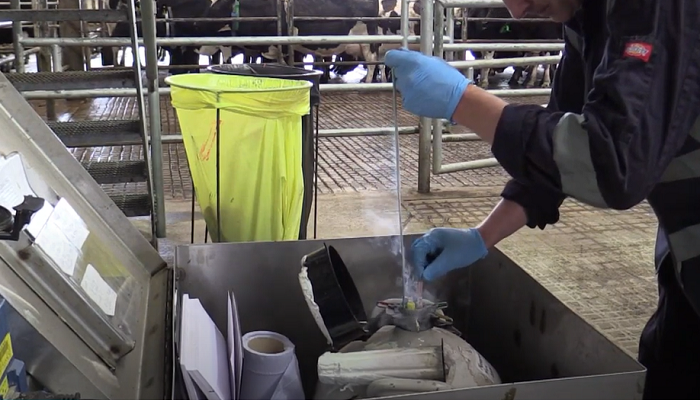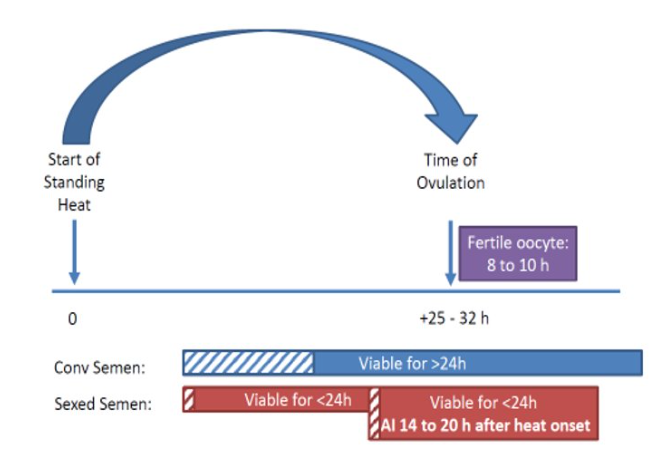28 April 2025
Getting the timing right with sexed semen

Timing is everything when it comes to using sexed semen during the breeding season. Getting it right can make a difference, Teagasc Dairy Specialist, Stuart Childs explains why in this article.
Sexed semen has grown in popularity in recent years and has increased dramatically in the last 2-3 years since the advent of sexed semen labs in the country which has significantly increased the availability of the product.
This trend is expected to increase into the future. Sexed semen technology is constantly evolving and who knows, a time may come where its use will be just as simple as conventional AI is currently. However, for successful use of sexed semen in 2025, timing is important.

Heat behaviour and timing of AI
The figure above shows a blue and white hatched area in regard to conventional semen straws. This area represents a phase known as the capacitation phase. Capacitation is the process that describes the physiological changes that happen to sperm cells in the female reproductive tract to all the sperm cells to fertilise an egg. The process of sorting semen to make it available as a sexed straw actually starts the process of capacitation in the lab during the sorting process and consequently, sexed semen will not survive as long in the cow or heifer as conventional semen. The solution to this situation is to inseminate later in the heat to ensure the sperm cells are in the tract at the time when the egg is released (ovulation).
This means for successful outcomes with sexed semen, farmers need to follow the table bellow as a guide for the best time (14-20hours after heat onset) to serve the cow or heifer to maximise the chances of conception.
| Onset of heat |
Time of Al | |
|---|---|---|
| 13:00 | 19:00 | 09:00 |
| 16:00 | 22:00 | 12:00 |
| 19:00 | 01:00 | 15:00 |
| 22:00 | 04:00 | 18:00 |
| 01:00 | 07:00 | 21:00 |
Timing of AI for sexed semen relative to onset of heat
